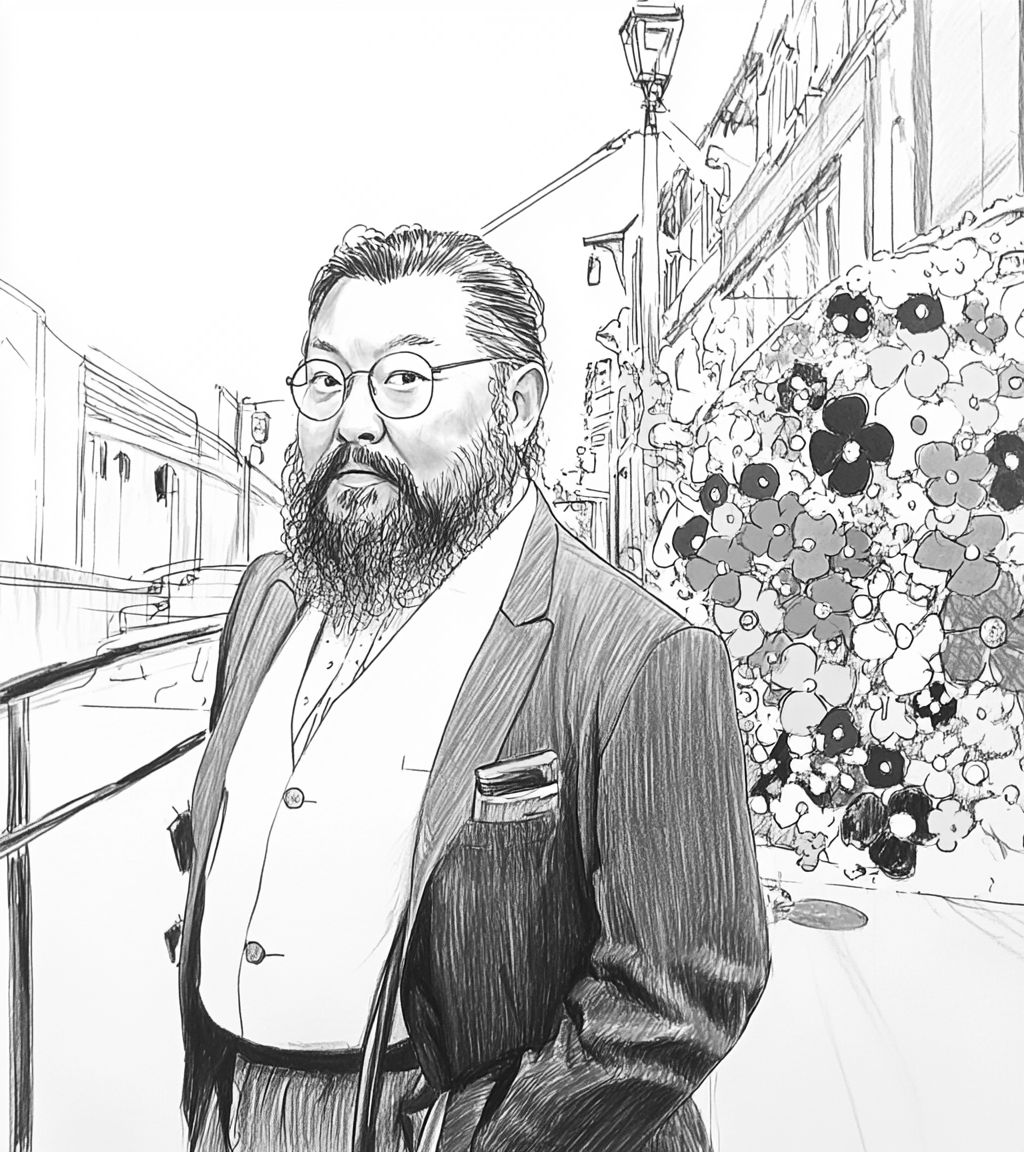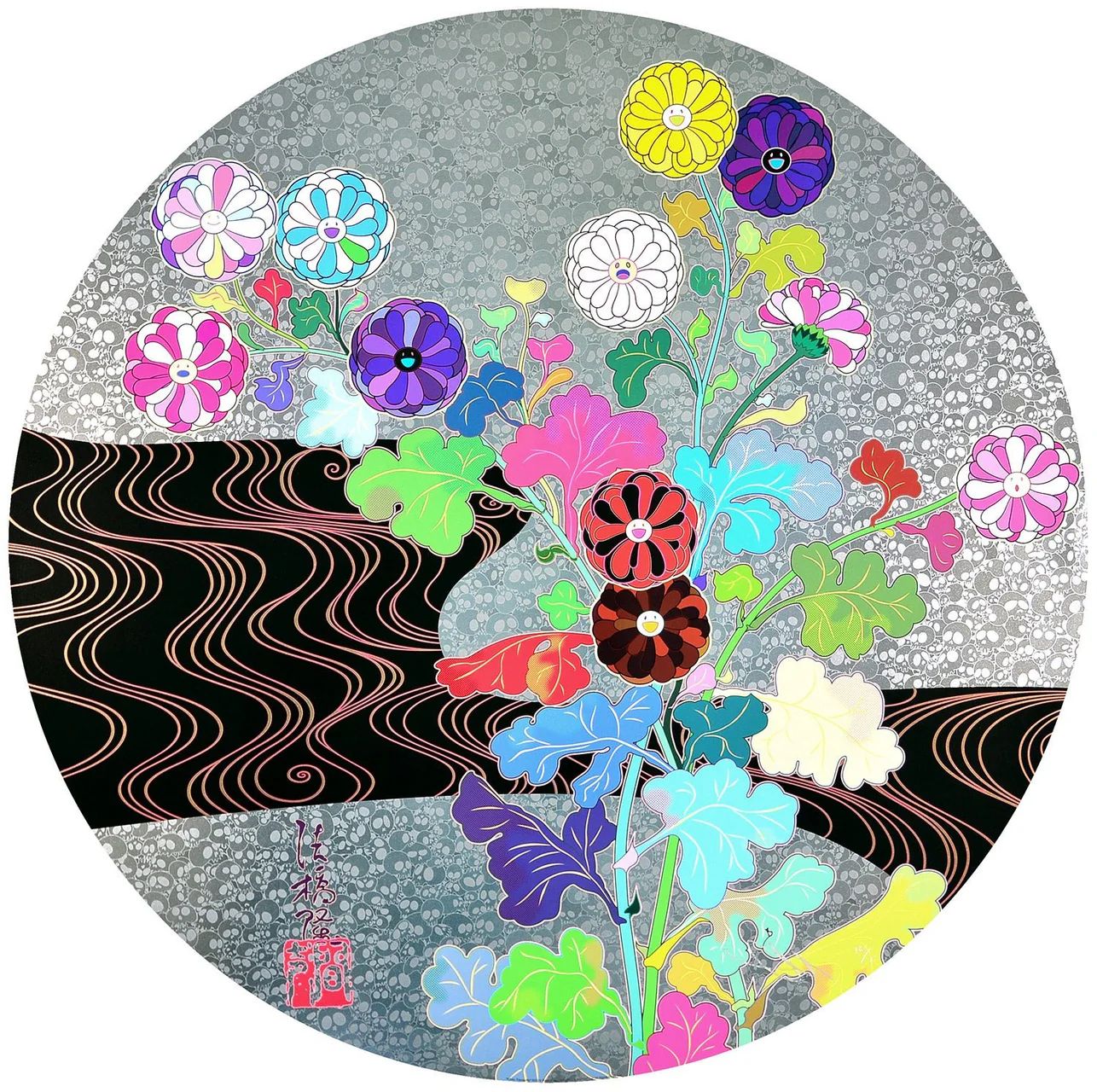
Takashi Murakami
Takashi Murakami studied traditional Nihonga painting at the Tokyo University of the Arts, earning a PhD in fine arts. Frustrated with the conservative nature of the Japanese art world, he began developing a new visual language that combined Japanese pop culture with contemporary art. In the late 1990s, Murakami gained international recognition through exhibitions in New York and Europe, positioning himself as one of the most prominent contemporary artists from Japan.
Murakami is best known for blending traditional Japanese aesthetics with modern pop culture in a style he calls “Superflat.” This concept flattens distinctions between high and low art, incorporating anime, manga, and commercial imagery into fine art contexts. His works often feature smiling flowers, cartoonish characters like Mr. DOB (his alter ego), and psychedelic color schemes. Influenced by both otaku culture and the legacy of Warhol’s Pop Art, Murakami critiques consumerism, globalization, and postwar Japanese identity while embracing their visual appeal.
Among Murakami’s most iconic works are 727 (1996), Tan Tan Bo series, and Flowers & Skulls. He has collaborated with brands like Louis Vuitton, bringing his art into global culture. Major exhibitions include Superflat (Los Angeles MOCA, 2001), Murakami (Brooklyn Museum, 2008), and The 500 Arhats (Mori Art Museum, Tokyo, 2015). His works are held in major collections, including MoMA (New York), Museum of Contemporary Art (Los Angeles), and the Broad. Murakami also founded Kaikai Kiki Co., a company that supports young artists and produces his merchandise and exhibitions.

